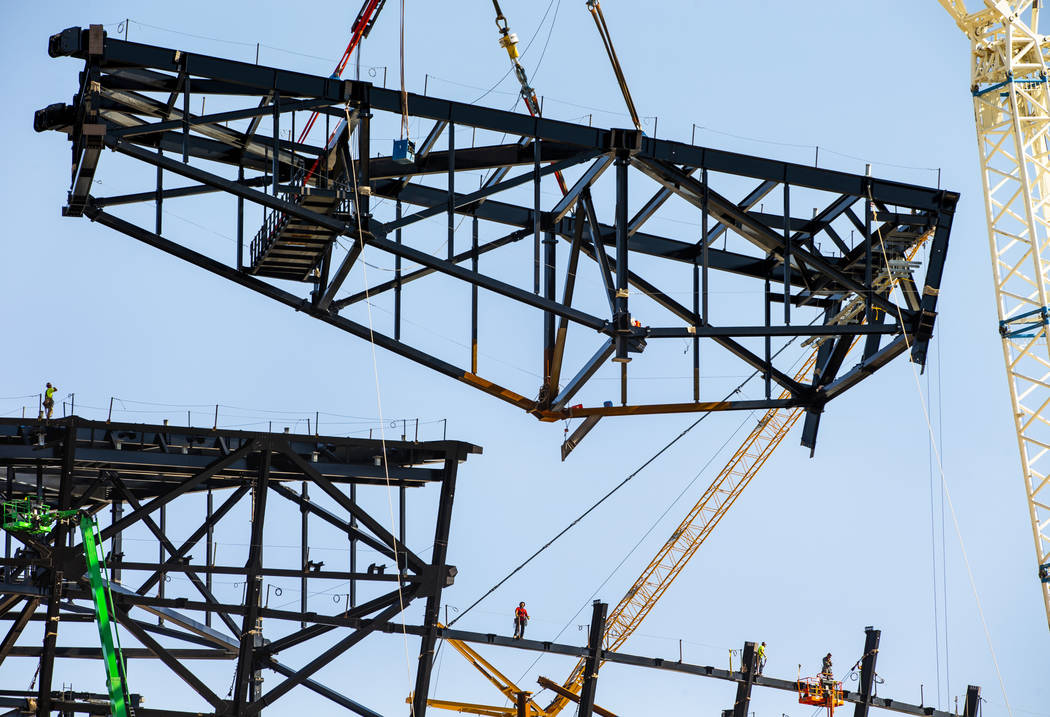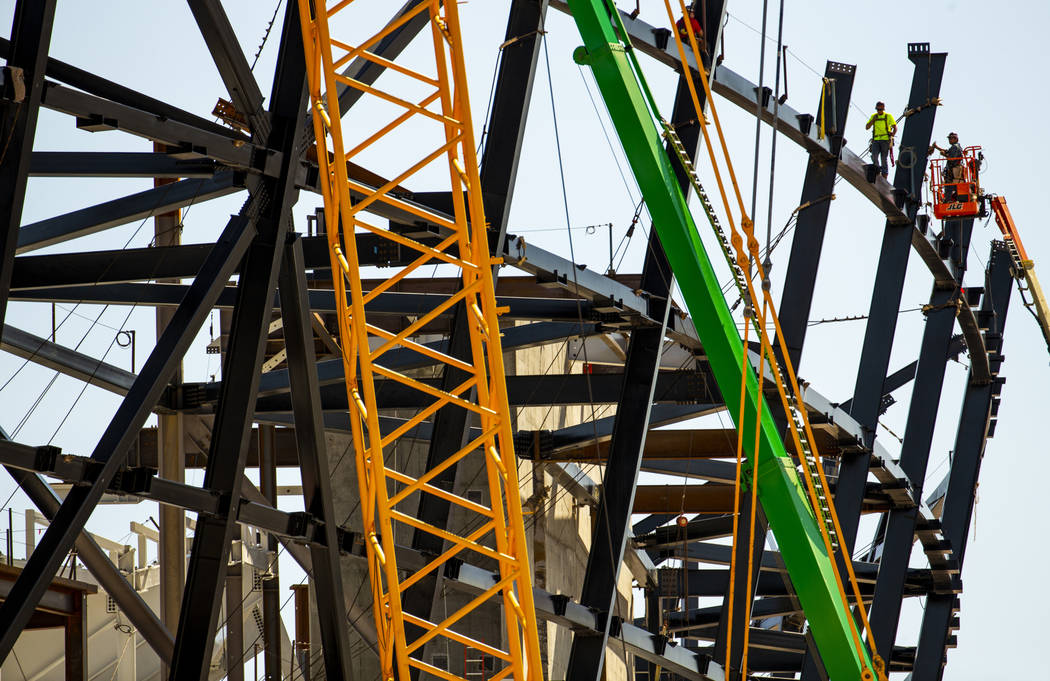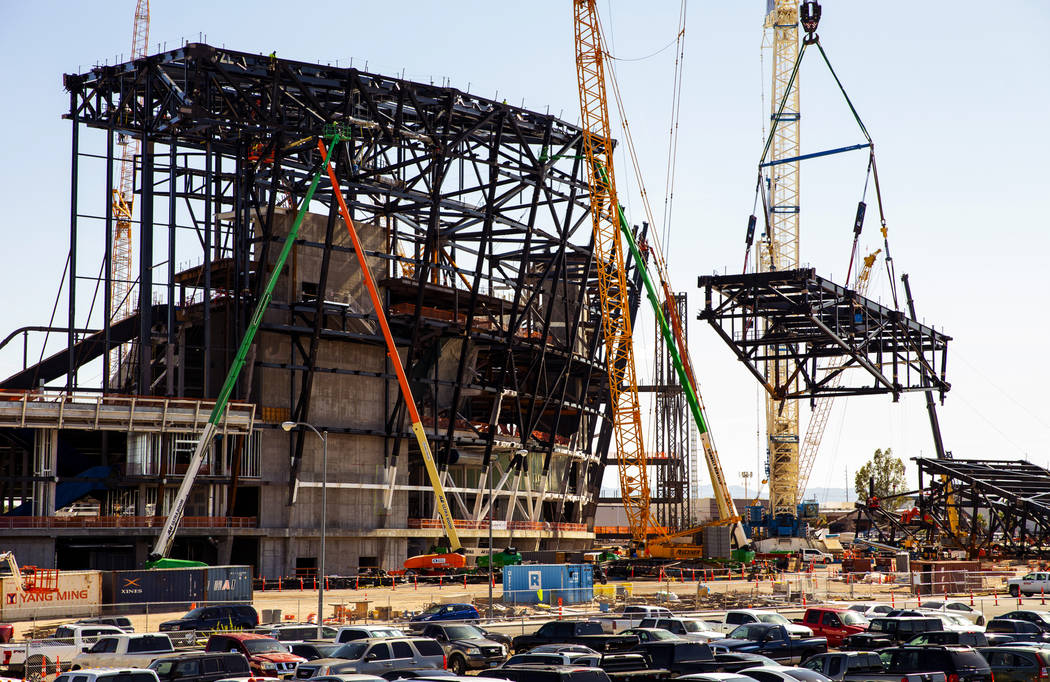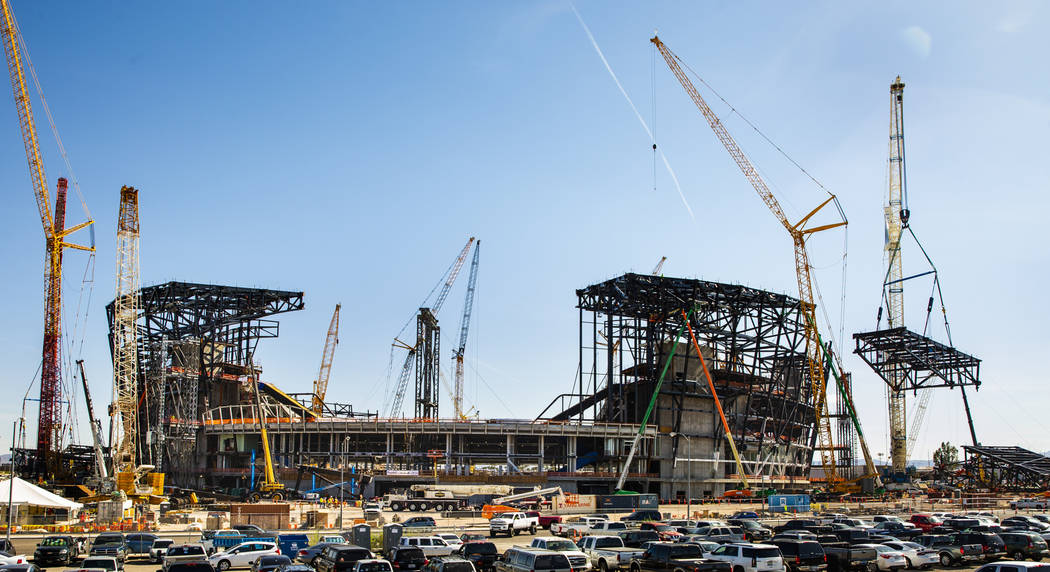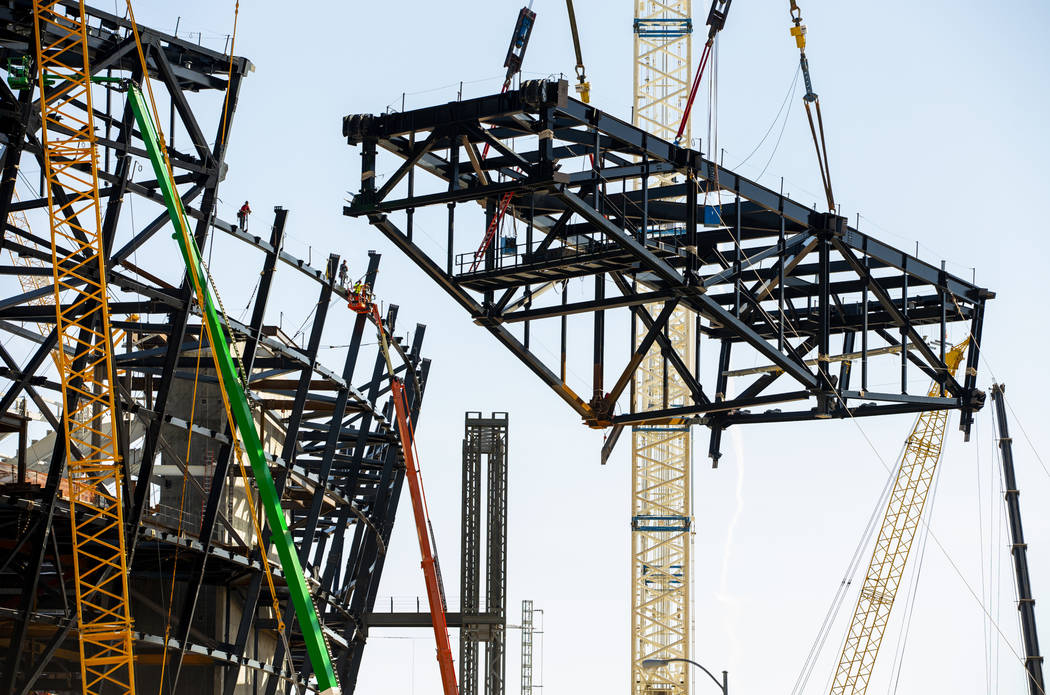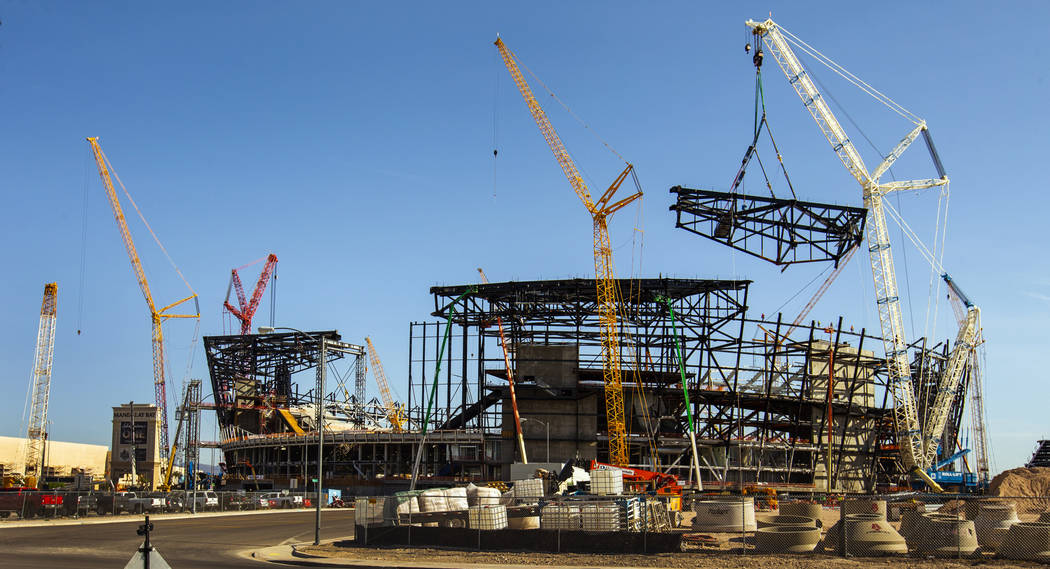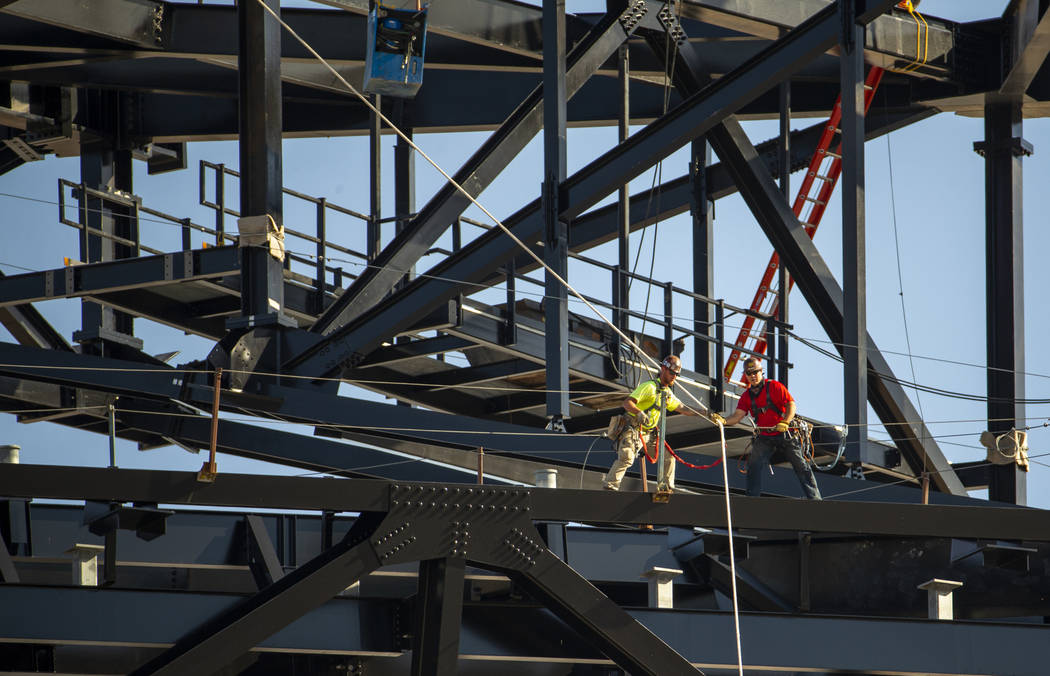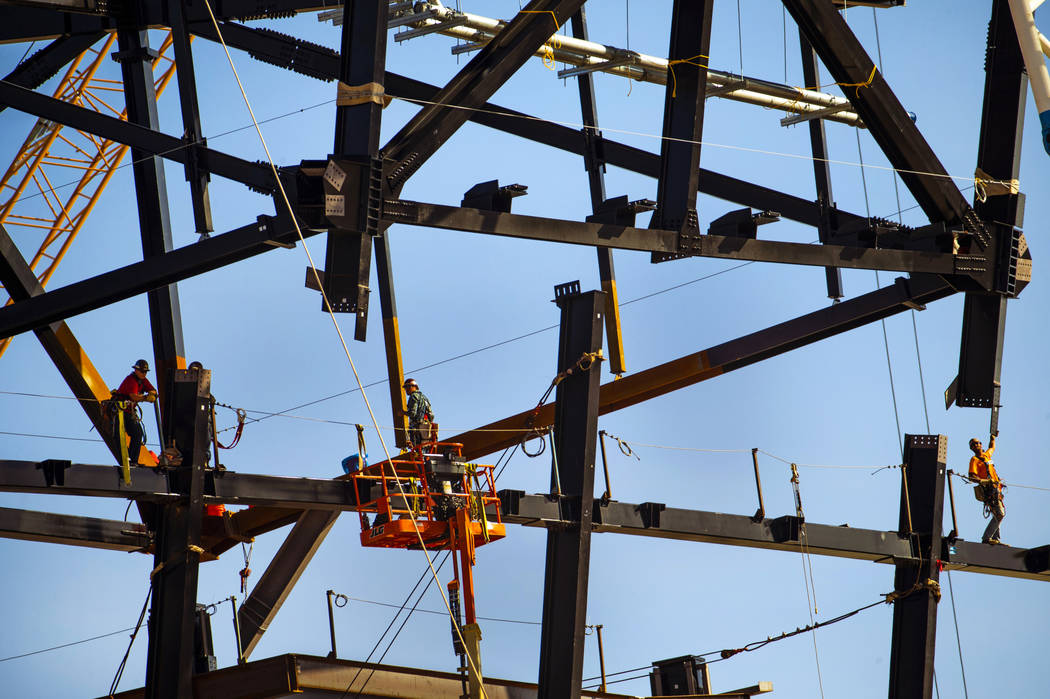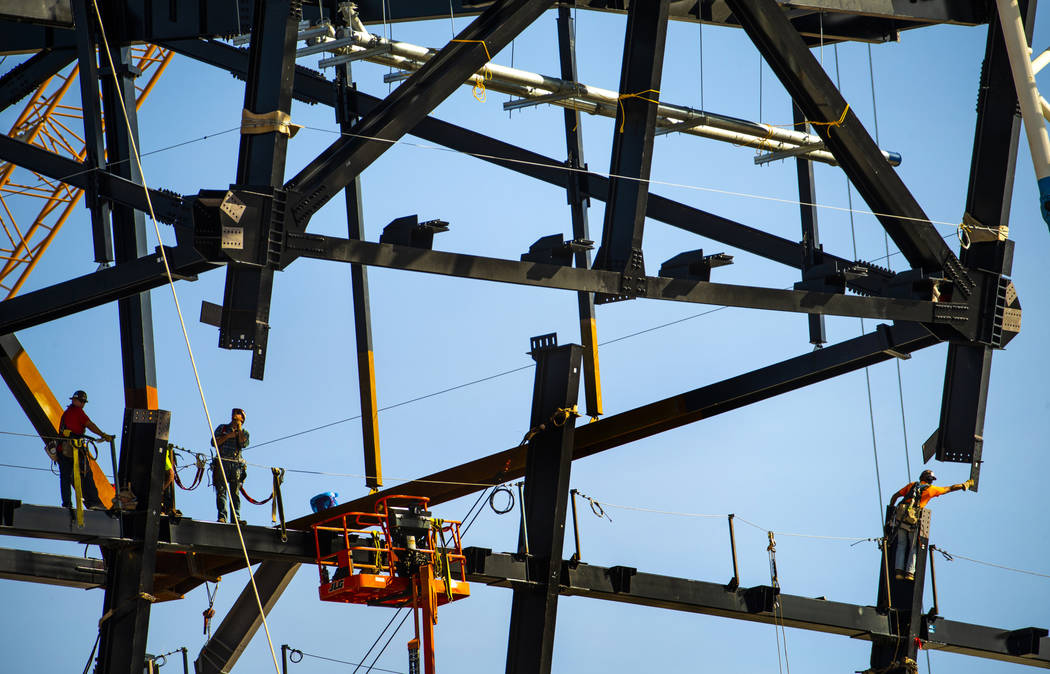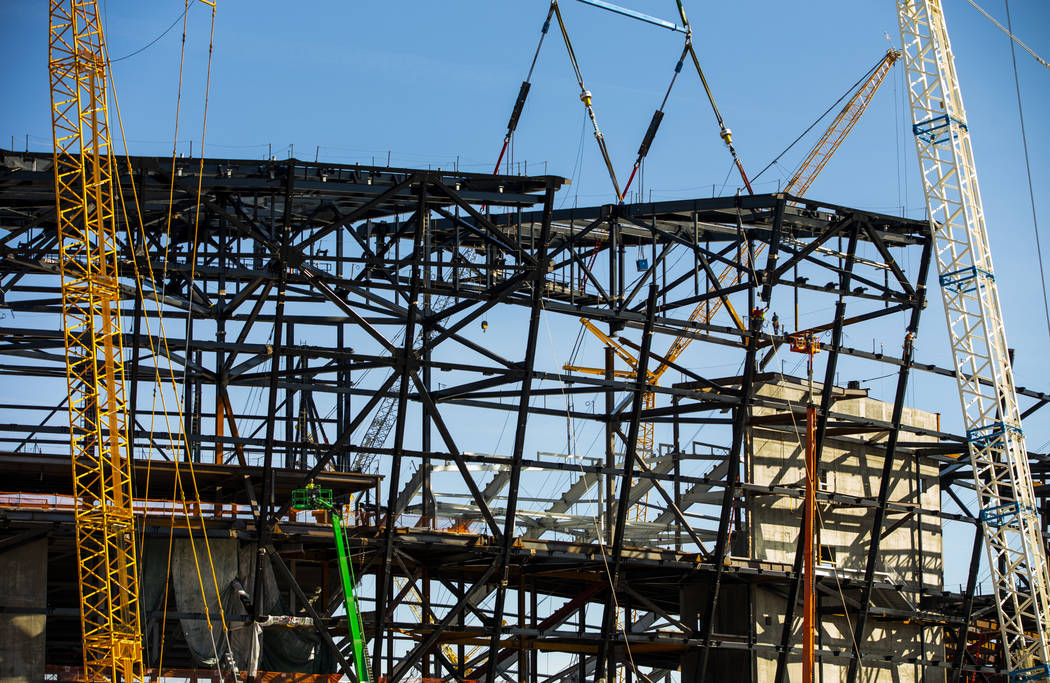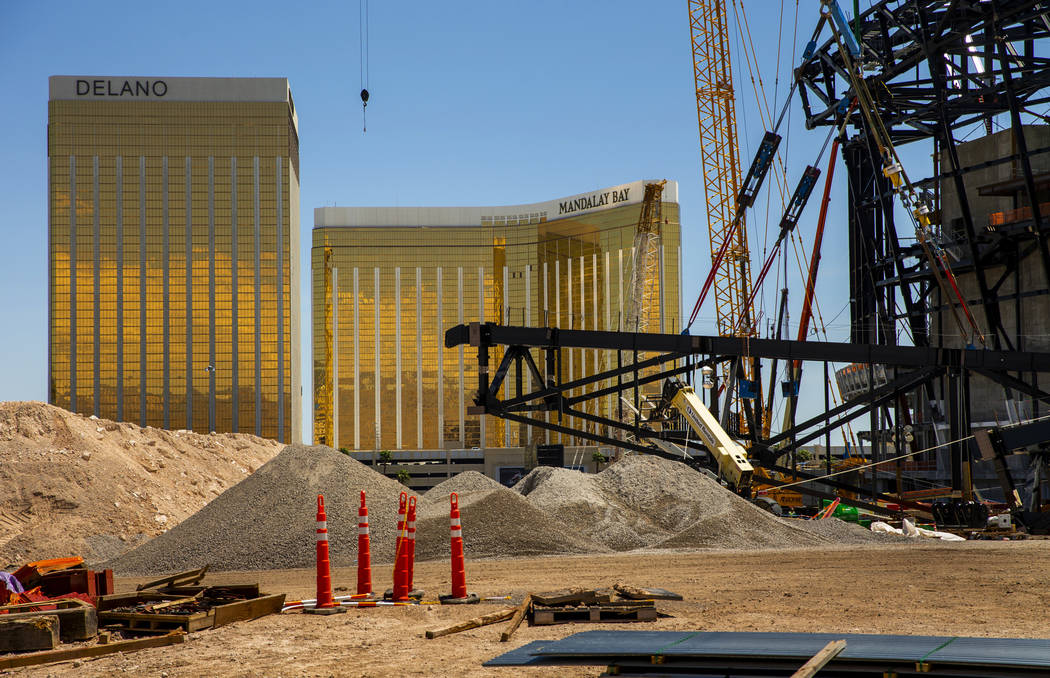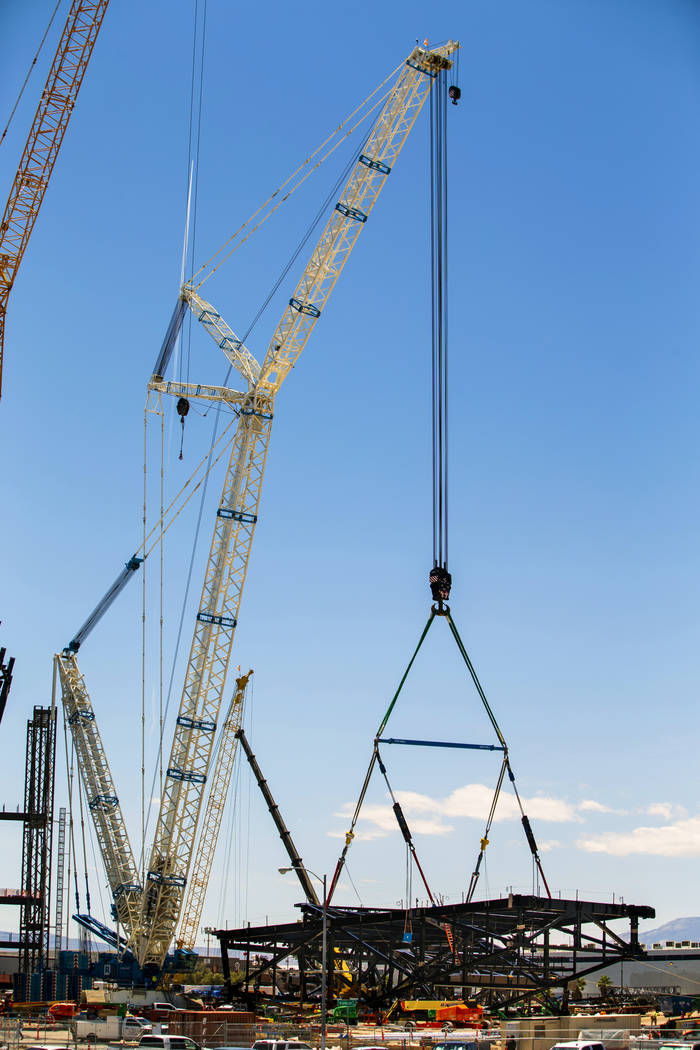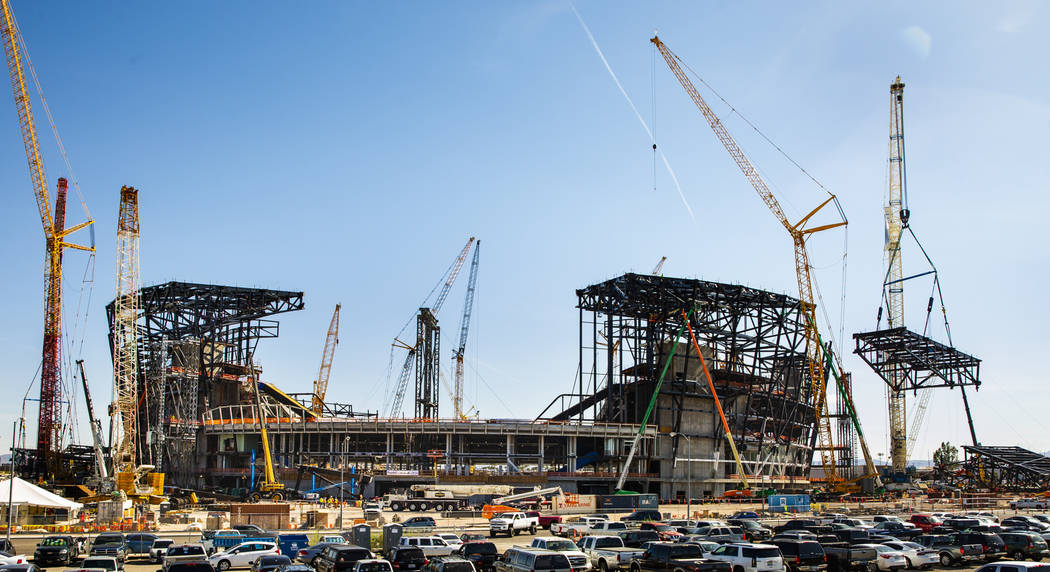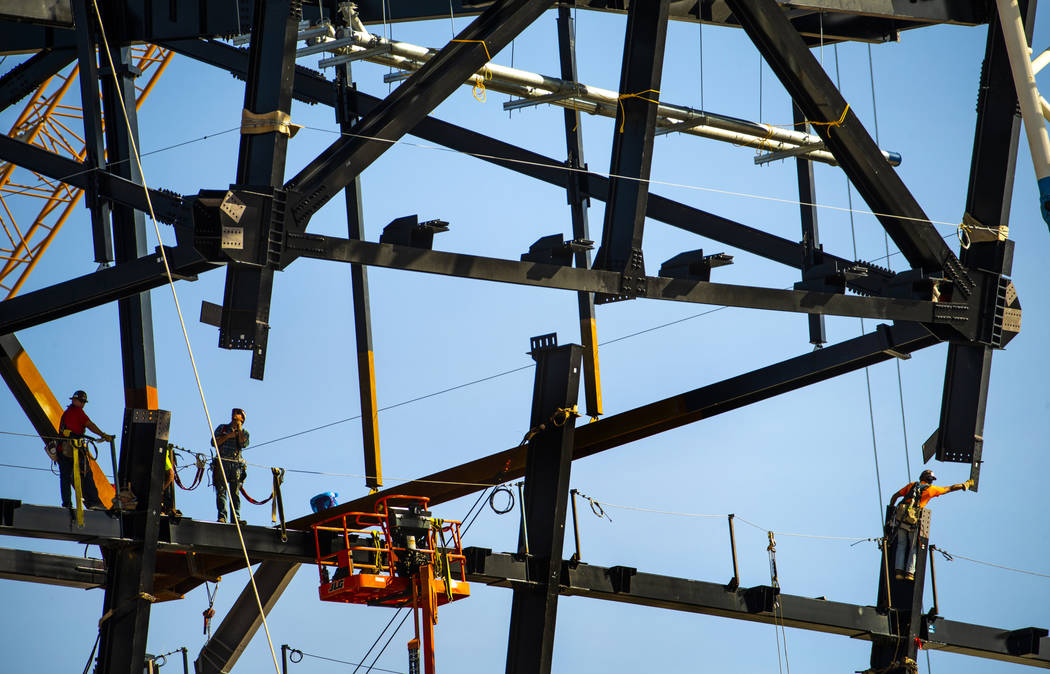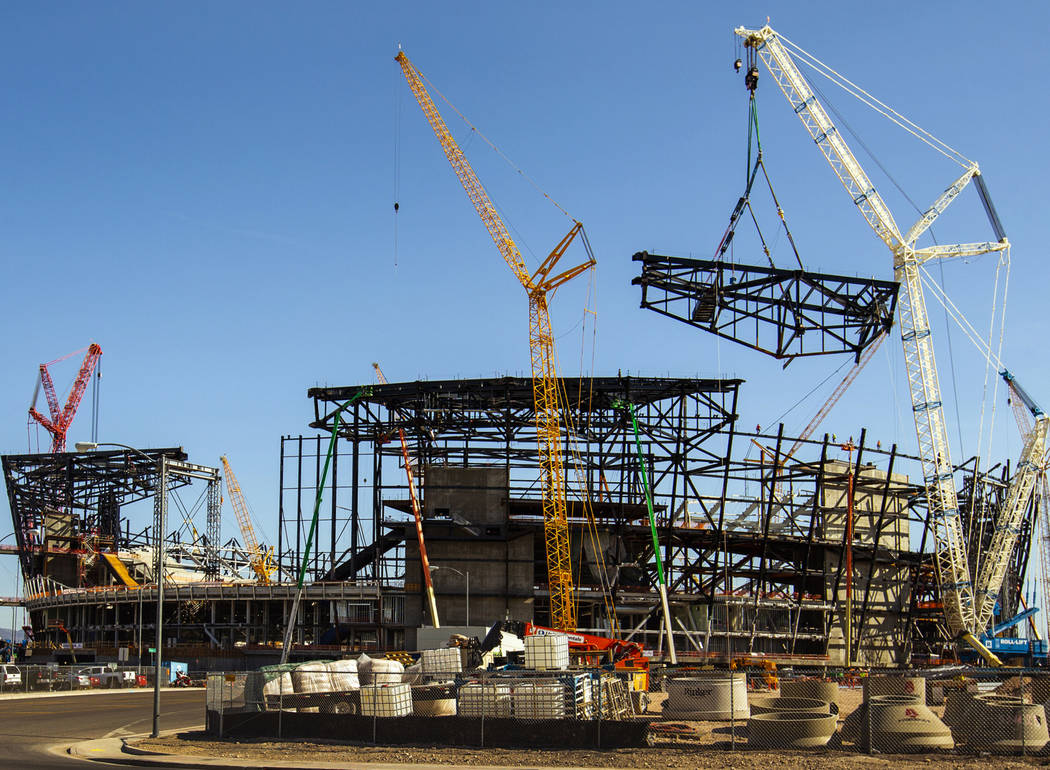Las Vegas Raiders stadium begins dangerous construction phase — VIDEO
Construction crews on the Las Vegas Stadium have begun one of the most difficult — and most dangerous — aspects of the project.
Over the next few weeks, crews will lift 22 65-ton canopy trusses into place around the rim of the highest points of the stadium some 120 feet above the ground.
Four truss assemblies of 26 already are in place in a process called “decentering” that takes carefully choreographed precision among iron workers, engineers and contract management supervisors.
The process has been described as “building a 17-acre Swiss watch.”
Don Webb, chief operating officer of the Las Vegas Stadium Co., a subsidiary of the Oakland Raiders, said putting the trusses in place not only requires precision at dizzying heights, but cooperation from the weather.
Because lifting the trusses into place is subject to defined wind tolerances, crews won’t attempt to move the massive pieces unless sustained winds at the site are less than 17 mph.
“There’s always a learning curve in the first one or two going up,” Webb said.
“When they put it into place, it looks like this massive thing and it wouldn’t require a lot of tweaking, but remember, where those rest kind of determine a lot. If it’s off a millimeter on the back, by the time it’s out there where the steel cable is connected, it could be a couple of feet off.”
The steel cable to which Webb is referring is the crosshatch pattern of cables supporting the translucent ethylene tetrafluoroethylene roof.
The ETFE roof is expected to give fans attending games at the 65,000-seat, $1.8 billion stadium the feeling of being outdoors.
Once every truss assembly is in place, crews will lift the roof, which will be built on the stadium floor, into place.
Webb said crews have learned from the installation of the first trusses.
The L-shaped truss assemblies are built on the ground and are left along the exterior perimeter of the stadium.
“There’s a very detailed choreographed lifting plan for each one of these — where the crane’s going to be placed, where the other equipment is going to be situated, how it’s going to be lifted, how it’s going to be harnessed, how it’s going to be turned in the air to be oriented properly and how it’s eventually going to land on its final resting point,” he said.
“Then, there’s going to be a two-day operation where the crane has to remain attached to that roof truss once it’s in place so that the infill steel is put in place after it’s up there.”
The learning curve has been swift for construction workers. While the placement of the first truss took a couple of days, the third one was in place within 45 minutes, Webb said.
He said workers learned that raising a truss off the ground and pivoting it into place before taking it up to the attachment point should make the installation process faster and easier. Trusses are attached to beams with 44 bolts at the 150-foot level.
Webb said the placement of all the canopy trusses is scheduled for completion by July 31.
But he added that observers shouldn’t be concerned about the opening being delayed if placement of the trusses isn’t completed by that date.
He said the schedule would be resequenced and the time made up.
Webb said a second large crane has been installed on the site so that truss assemblies could be placed on both sides of the stadium in tandem.
The installation of the roof also will present some engineering and scheduling challenges.
Webb said some portions of the roof would be left open so that cranes can extract equipment from the interior since they’ll be too large to move through other stadium openings. He said the stadium wouldn’t be waterproof sealed until March — about four months ahead of the anticipated opening of the building.
“It’s just-in-time manufacturing, just-in-time assembly and just-in-time placement,” Webb said. “It’s a part of doing four years of work in 31 months, but these crews are up to it.”
Contact Richard N. Velotta at rvelotta@reviewjournal.com or 702-477-3893. Follow @RickVelotta on Twitter.



